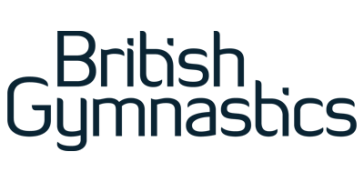Wellbeing in the workplace and the benefits of flexible pay

Once upon a time ‘workplace wellbeing’ was seen by many as a fluffy nice-to-have. Considered a vague concept – it was hard to define, hard to measure and often dismissed: “We don’t (have time to) do that stuff here.” Some organisations were keener to explore it, but other things took priority. Things are changing. Have changed.
“Not before time,” forward-thinkers will say. ‘Wellbeing’ is no longer a nice-to-have (fluffy or otherwise) it’s a must-do. And it’s not just a people-friendly add-on. It makes sound business sense. In essence it’s a simple concept: a happier employee is a more productive employee. Wellbeing plays a big part and has a positive impact on several things – recruitment, retention, workplace relationships, employee health, output, attendance and hours worked, job satisfaction and professional development. Engaged, happier employees interact better with customers – something that noticeably impacts hospitality and retail businesses. Additionally, a focus on wellbeing is expected in many quarters – particularly among demographics who will soon make up much of the workforce.
For employers, an increased focus on wellbeing will likely mean greater visibility or awareness of employees who may be struggling – financially or otherwise. It will also position them to build a stronger rapport with their teams and offer additional support.
What is wellbeing?
Wellbeing and wellness have been brought into sharper focus by pandemic-generated anxiety and uncertainty. Never in recent memory have we collectively needed support and certainty like we do now.
So, what is ‘wellbeing’ when we think of work?
There are what’s known as the ‘four pillars’ of wellbeing: physical wellbeing, mental wellbeing, financial wellbeing and social wellbeing. Supporting employees across these four pillars has a positive impact on employee and organisation. And it’s a sounder investment and better alternative to continually recruiting ultimately unsatisfied employees. Not only will a wellbeing programme improve the overall health of a workforce, it will also provide a sense of empowerment.
Employees want to know: ‘Am I valued?’ ‘Will the company support me if…?’ Since the pandemic there’s been a significant merging of home and work lives. The challenges faced by many have placed wellbeing at the forefront of job satisfaction criteria.
An opportunity for change
Organisations can change some preconceived ideas about working life. Incorporating wellbeing initiatives will help mitigate some of the complexities of work-life mix. After all, that old adage, ‘you only get out what you put in,’ is a poignant reminder to employers. If a business expects improved productivity from a workforce loaded with external distractions, how will they support it?
In ‘Three systemic reasons wellbeing will win the war for talent’, Wagestream explores how wellbeing is now a lever through which organisations drive performance. Wellbeing sits at the core of being a thriving, productive human being – at home and work.
Having an EAP (employee assistance programme) where workers can access neutral, professional advice on matters sits central to improving and supporting wellbeing. Typically, the organisation will engage external support, provide contact details to their workforce (while sitting out of any communications – it needs to happen anonymously) and pick up the bill for support provided. Underpinning an EAP programme, an organisation should utilise its own workforce by having several mental health first aiders (MHFAs) on board.
Money worries
Not surprisingly money worries impact employee wellbeing. There are few more obvious things to consume people than worrying about money. Work performance will likely deteriorate when someone has money concerns. Research shows that many people – particularly in lower-paid hospitality, retail and care jobs – have little in the way of savings. Many would be hard pushed finding £250 for an unplanned expense.
Financial education takes different forms and is something organisations should take on board to help support their people.
One option businesses have to support financial wellbeing is by rolling out a flexible pay access (aka ‘pay-on-demand’ or ‘payment drawdown’) programme. It’s a simple concept – workers can access flexible pay as they have accrued. Worked 14 days and want to get paid? You get paid; all deductions taken care of. Work three days and want to get paid? You get paid. It’s not credit. Neither is it a loan or advance.
Benefits for both parties
Flexible pay access helps people budget and balance income against outgoings and avoid getting into debt. Some employees will take on extra shifts if they get paid more promptly – rather than waiting until the end of the month. Faced with an unexpected bill or expense mid-month, the employee can access flexible pay. And for the employer – offering pay-on-demand is attractive in the current it’s-a-jobseekers’ market. It can only help improve retention rates – job satisfaction and wellbeing align with lower employee turnover rates. Considering reduced productivity, advertising and agency costs, recruiting and onboarding, employee retention should be a priority.
Money worries eased
Evidence indicates that when people use their hard-earned money, they’re more prudent than when using a credit card. Even just having visibility of earnings has a positive effect – people who use flexible pay access systems regularly check what they’re owed. Flexible pay reduces stress and can work in a financial education capacity. Seeing what you’ve earned so far in a month can act as a positive in terms of mental health. Money worries, on the other hand, can be catastrophic.
In assessing the impact of flexible pay access, Wagestream found 53% of users felt their financial situation was better. Interestingly, 42% of users felt ‘less distracted at work’ through being able to access their pay earlier.
MHR Financial Wellbeing flexible pay access product integrates seamlessly with MHR’s iTrent HR and Payroll system.
So, wellbeing – a once seemingly fluffy nice-to-have concept, is finding its place at the core of many organisations. Successfully implemented, a wellbeing programme is the proverbial employee-employer ‘win-win’. A happier, less stressed-out employee is a more productive employee. Scale that up across the workforce and you’ll find an organisation in good shape. Successful, well-managed, growing organisations attract jobseekers. Organisations that overlook wellbeing will find it increasingly difficult to attract and retain good people – and that’s not a direction they want to go in.
The benefits of a successful wellbeing programme are significant. And obvious.




































































